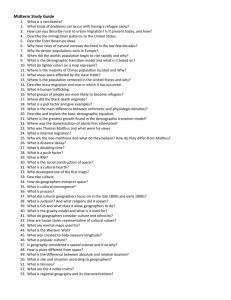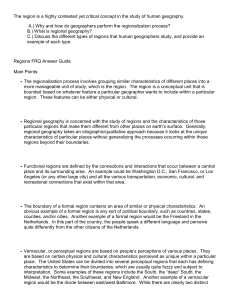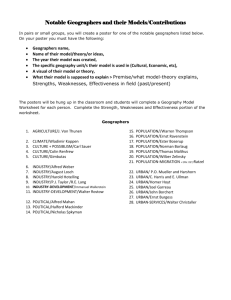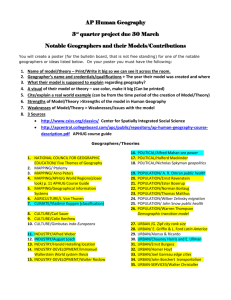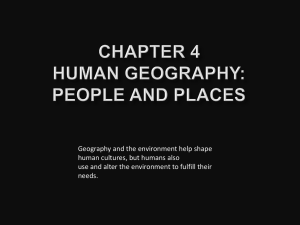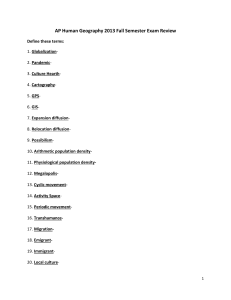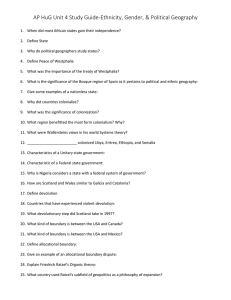Notable_Geographers_and_Models_1415
advertisement
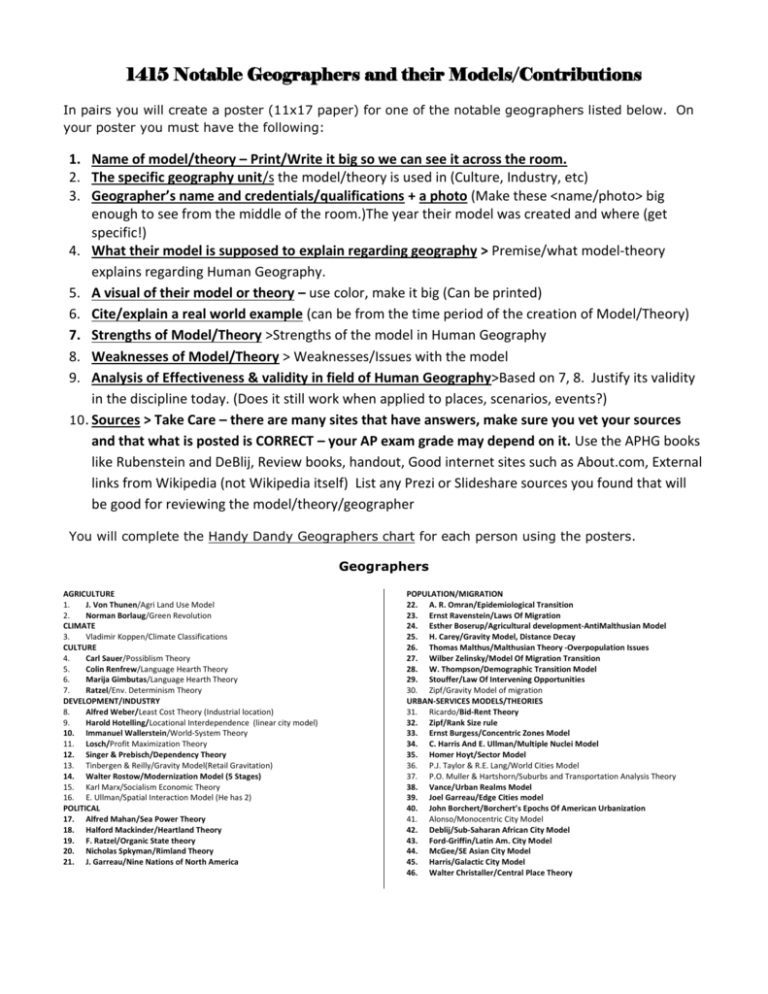
1415 Notable Geographers and their Models/Contributions In pairs you will create a poster (11x17 paper) for one of the notable geographers listed below. On your poster you must have the following: 1. Name of model/theory – Print/Write it big so we can see it across the room. 2. The specific geography unit/s the model/theory is used in (Culture, Industry, etc) 3. Geographer’s name and credentials/qualifications + a photo (Make these <name/photo> big enough to see from the middle of the room.)The year their model was created and where (get specific!) 4. What their model is supposed to explain regarding geography > Premise/what model-theory explains regarding Human Geography. 5. A visual of their model or theory – use color, make it big (Can be printed) 6. Cite/explain a real world example (can be from the time period of the creation of Model/Theory) 7. Strengths of Model/Theory >Strengths of the model in Human Geography 8. Weaknesses of Model/Theory > Weaknesses/Issues with the model 9. Analysis of Effectiveness & validity in field of Human Geography>Based on 7, 8. Justify its validity in the discipline today. (Does it still work when applied to places, scenarios, events?) 10. Sources > Take Care – there are many sites that have answers, make sure you vet your sources and that what is posted is CORRECT – your AP exam grade may depend on it. Use the APHG books like Rubenstein and DeBlij, Review books, handout, Good internet sites such as About.com, External links from Wikipedia (not Wikipedia itself) List any Prezi or Slideshare sources you found that will be good for reviewing the model/theory/geographer You will complete the Handy Dandy Geographers chart for each person using the posters. Geographers AGRICULTURE 1. J. Von Thunen/Agri Land Use Model 2. Norman Borlaug/Green Revolution CLIMATE 3. Vladimir Koppen/Climate Classifications CULTURE 4. Carl Sauer/Possiblism Theory 5. Colin Renfrew/Language Hearth Theory 6. Marija Gimbutas/Language Hearth Theory 7. Ratzel/Env. Determinism Theory DEVELOPMENT/INDUSTRY 8. Alfred Weber/Least Cost Theory (Industrial location) 9. Harold Hotelling/Locational Interdependence (linear city model) 10. Immanuel Wallerstein/World-System Theory 11. Losch/Profit Maximization Theory 12. Singer & Prebisch/Dependency Theory 13. Tinbergen & Reilly/Gravity Model(Retail Gravitation) 14. Walter Rostow/Modernization Model (5 Stages) 15. Karl Marx/Socialism Economic Theory 16. E. Ullman/Spatial Interaction Model (He has 2) POLITICAL 17. Alfred Mahan/Sea Power Theory 18. Halford Mackinder/Heartland Theory 19. F. Ratzel/Organic State theory 20. Nicholas Spkyman/Rimland Theory 21. J. Garreau/Nine Nations of North America POPULATION/MIGRATION 22. A. R. Omran/Epidemiological Transition 23. Ernst Ravenstein/Laws Of Migration 24. Esther Boserup/Agricultural development-AntiMalthusian Model 25. H. Carey/Gravity Model, Distance Decay 26. Thomas Malthus/Malthusian Theory -Overpopulation Issues 27. Wilber Zelinsky/Model Of Migration Transition 28. W. Thompson/Demographic Transition Model 29. Stouffer/Law Of Intervening Opportunities 30. Zipf/Gravity Model of migration URBAN-SERVICES MODELS/THEORIES 31. Ricardo/Bid-Rent Theory 32. Zipf/Rank Size rule 33. Ernst Burgess/Concentric Zones Model 34. C. Harris And E. Ullman/Multiple Nuclei Model 35. Homer Hoyt/Sector Model 36. P.J. Taylor & R.E. Lang/World Cities Model 37. P.O. Muller & Hartshorn/Suburbs and Transportation Analysis Theory 38. Vance/Urban Realms Model 39. Joel Garreau/Edge Cities model 40. John Borchert/Borchert’s Epochs Of American Urbanization 41. Alonso/Monocentric City Model 42. Deblij/Sub-Saharan African City Model 43. Ford-Griffin/Latin Am. City Model 44. McGee/SE Asian City Model 45. Harris/Galactic City Model 46. Walter Christaller/Central Place Theory


